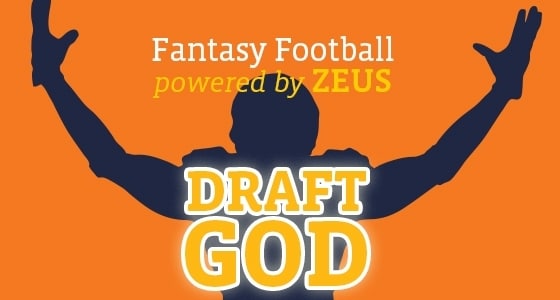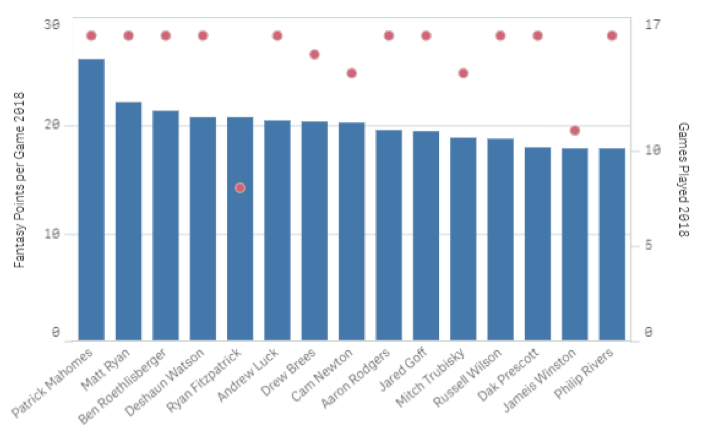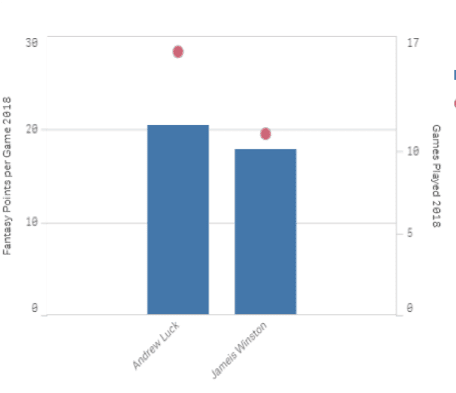Posted by John Delligatti on Wed, 08/07/2019

The beginning of August means different things to everyone, and one group spends that month preparing for the best season of all: Football Season. During this time the fantasy football nerds among us seek out information and opinions wherever we can get it: hearing every possible opinion about the most recent injury, changes to your teams’ coaching staff, and whether Tom Brady has lost a step at age 86.
The fact is that these opinions are based on a combination of statistics, the good ol’ eye test, and most importantly, emotions. But what if your favorite analyst sees things a bit differently than you? What if we had a way to strip out the emotion of the pundits that we all know and love and instead looked at things from a data-driven perspective? Could Fantasy Football turn the normally mundane Excel datasheet into, dare I say it, fun?
To take it a step further, what if SDI’s ZEUS MRO Analytics engine was fed fantasy football data? Could it be easy for everybody to understand this data and be able to compare multiple players at a moment’s notice with no technical experience required? That would make data fun AND easy!
Using Data to Your Advantage
Enter the data-driven approach to Fantasy drafting. There are many different angles to consider, such as the fact that running backs are best at age 28 and fall off a cliff at 30. Or that teams who travel from the west coast to the east coast see a drop in performance, and that Andy Reid crushes it after a bye. Rather than experiencing paralysis by analysis, these facts should all be considered with one goal in mind: let the draft come to you.
The game has grown so large that many sports companies have mock drafts that are constantly being conducted from now up until the season starts. With these drafts comes data and, most importantly for you, the enlightened fantasy manager, market intel. This data offers insight as to how much everyone else values the players in the draft.
If you believe player X is worth a fifth-round pick, but he’s consistently being drafted in the third round, you should not plan on having him on your roster this season. Conversely, if you view a player as a surefire third-round pick yet he’s being drafted in the seventh round, use that knowledge to your advantage. Use your third-round pick to lock up more of a sure thing and draft your guy in round five or six. Odds are (based on your market intel) that you will get him at that value, and you will have essentially picked up 2 third-rounder’s.
While it may be impossible to have a precise personal ranking on every single player, the basic idea here is to target players who are ranked higher than where they are being drafted. In almost any situation, a player ranked preseason as the 30th best player will outperform the 75th ranked player that you would likely get in the eighth round.

Figure 1.
This concept can be further simplified with cluster analysis generating tiers of players. A smart drafter should not draft a tier 2 player while a tier 1 player is still on the board. Although you could split hairs, the range of outcomes for all players within a given tier will be similar. This view (Figure 1) from the ZEUS Fantasy Football application can help compare where a player is being drafted vs his expected value for the coming year. Bubble size represents points scored in 2018, and bubble color represents the tier assigned to each player.
Players on or around the red trend line are being drafted in proportion to their forecasted production. Players above the line (such as Patrick Mahomes) are being drafted too early, meaning they may not provide great value compared to other players in that spot. While players under the line (such as Travis Kelce) would represent a great value compared to where they’re being drafted.
Breaking It Down Further
Tiers can be used to further enhance your decision making. As an example, George Kittle is being drafted after Zach Ertz, but according to the cluster analysis, George Kittle is a tier 3 player while Zach Ertz is a tier 5 player. The statistics tell you Kittle is a much better value at this draft position.

Figure 2.
Deciding on which QB will bring you fantasy glory is no easy task. Do you grab a marquee name in the early rounds? Or try to find value in the late rounds given the fact that there are so many serviceable fantasy QB’s compared to other positions?

Figure 3.
Thanks to ZEUS analytics we can quickly compare their stats the same way we can quickly compare MRO data. If we just looked at total fantasy points scored, then we’d only be seeing part of the picture (Figure 2). Taking a deeper dive into players’ average points per game as well as the amount of games played will give us a much better idea of their consistency (Figures 3 and 4).

Figure 4.
Both Ryan Fitzpatrick and Jameis Winston were on the same team last year and they both logged a few incomplete games (due to a combination of injuries and benching throughout the season). This is evidenced by the fact that they each have fewer games played than anyone else in the top 15 at that position. They barely make the top 15 in terms of total points scored, but when looking at their average points per game, Fitzpatrick comes in at #5, and Jamies Winston is still a top 15 QB even though he was splitting time. Winston is the clear-cut starter in Tampa this year, will not be part of a time share, and is being drafted 67 spots behind Andrew Luck who scored only 2.7 points more on a per game basis.
ZEUS: Creating Actionable MRO Insights
While this level of analysis may seem over-the-top, especially for a game, it’s not out of reach. SDI can take any manner of MRO data and empower manufacturers, universities, school districts, transportation terminals, and other asset-intensive operations with actionable insights. In this same way, SDI has empowered its employees to take action on their Fantasy football data by feeding the ZEUS MRO Analytics engine with Fantasy Football Data. With the power of ZEUS, users can generate customized views and quickly compare the statistics of players during their drafts. The application includes data on where players are being drafted versus where they are ranked, indicating opportunities to buy low, and even incorporates the tier clustering mentioned above. With the ZEUS Fantasy Football App, SDI has taken MRO technology to a whole new level.
DRAFT GOD: Make your own God-like picks
Want to see Draft God in action? We’ll take you through it on August 22nd at 1pm Eastern Time. Register here for the webinar.
Want to use Draft God before your league makes their picks? Every registered attendee is entered into a drawing to win a one-week license to Draft God to give you the power of ZEUS for your Fantasy Football draft. Can’t make the webinar? Register anyway and we’ll enter you in the drawing. Good luck!





